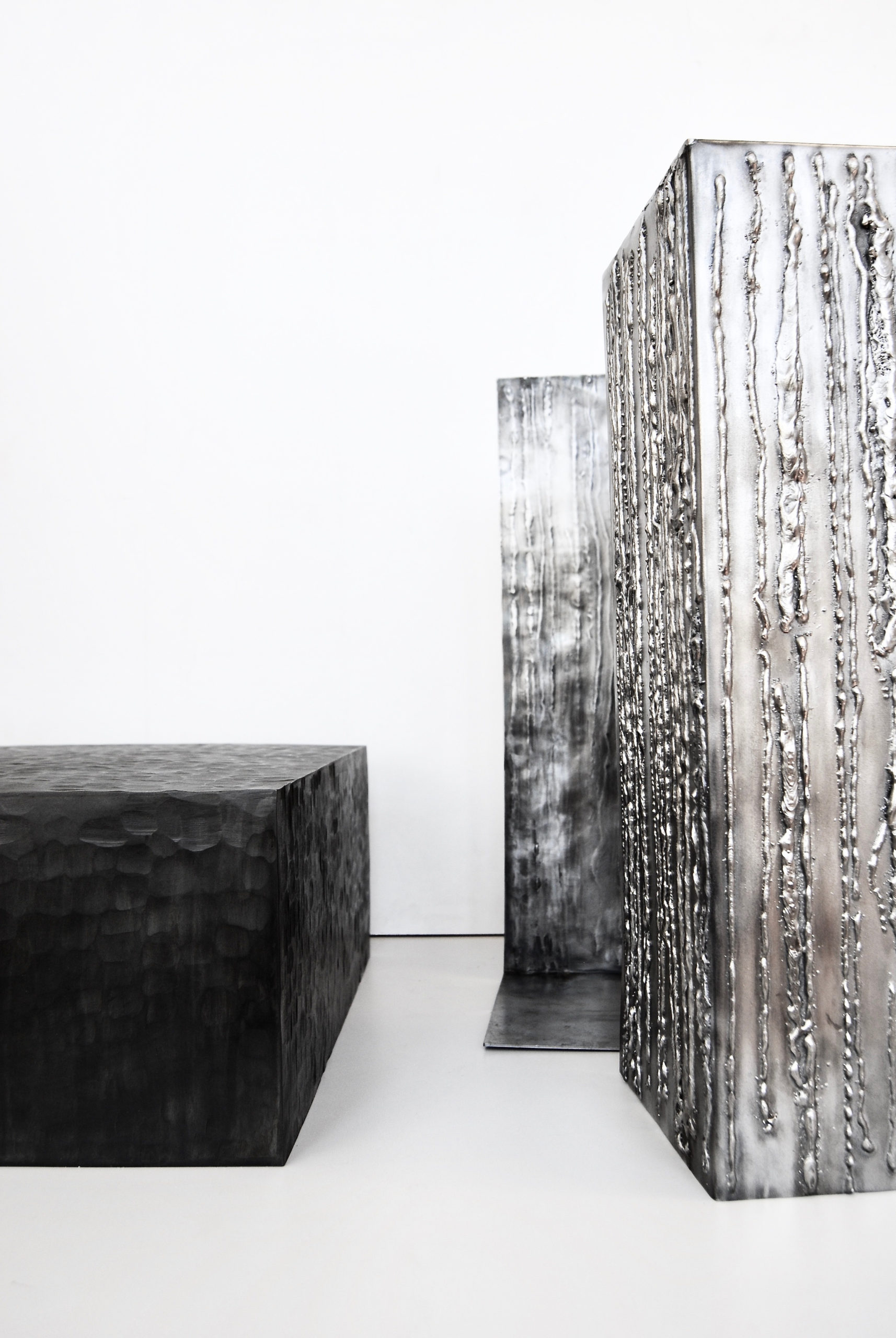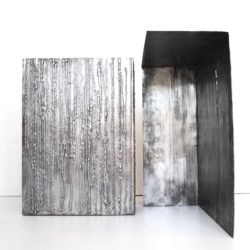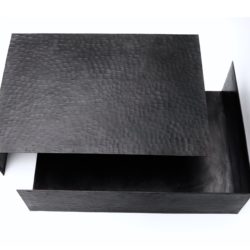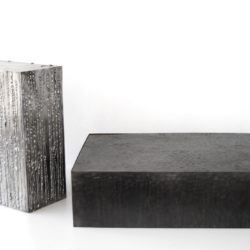MATERIAL MIND
Description
At first glance, MATERIAL MIND shows monolithic cuboids. With their designed surfaces, the objects LIQUID and SOLID show aspects of steel as an abstract picture. But the cuboids have openings through which light shines. Is the curiosity, about what is hidden inside, enough to interact? New architectures and formations can be created through interaction. And so LIQUID and SOLID define more an agitator than a sculpture, as it is often conceived in Minimal Art. The new architecture allows an inside view. The backsides also show traces of the processing. The structure therefore does not just remain a surface but also forms substance. And yet there is a contrast between inside and outside, between the designed and the pure. The sensual experience provides new insights into the material. The surface offers a variety of visual stimuli when the structures change through light and shadow, and the haptic impression when stroking the surface. You experience the weight when you lift the components. You can hear the sound when you set the material down.What is the Topic?
MATERIAL MIND. The term material mind transfers the collective memory to applied material science. It is based on material knowledge, material history, material iconography, and material iconology and thus shows a changeability. The objects LIQUID and SOLID are the results of a material-iconological design process in which the sensual-aesthetic function and the material statement are at the beginning. The material should not only be the medium of the idea, but should also be the topic of the design. The surface design illustrates the aesthetics of materials, as it simplifies principles and at the same time shows them in a more compact manner. And so the work also shows a radical point of view on surface design, which is still regarded with skepticism.
Why does it look like this?
LIQUID shows the flowing, plastic, soft material when heated; the steel was processed above the liquidus line. SOLID manifests the solid, hard character of steel. The structure quotes the hammer blow, but also makes clear that you have to be more drastic with cold steel. Physical contact is essential for the relationship between human, material and artifact. An action-oriented situation must be created without the artifact losing its 'aura' - as it surrounds the artwork in a museum. So I designed an object that can be experienced interactively, but is still an object. A minimalist design was the central goal, because the surface becomes more important with the formal reduction. Metals are characterized by high stability despite a small material cross-section. Thus, a large spatial volume can be defined. A division into two mirror-symmetrical components shows the contrast again. For LIQUID - with its vertical lines - a standing cuboid results. SOLID, as a horizontal cuboid with twice the size of LIQUID, is intended to produce a solid image
What is special?
Due to its unique properties and economic advantages, steel is the material of functionality. Steel is the material for tools, weapons and industrialization. Steel is all around us and it keeps the everyday, functional and technical material. This is also based on cultural-historical factors. It is considered the least precious of the metals and has never really established itself in jewelry. I want to capture and illustrate the special atmosphere, the beauty that surrounds steel during its manual processing, sometimes only for a fleeting moment. I want to abstract the properties of steel in its expression. For me, steel is not only an industrial, functional material, but it also shows that it can be worked by hand and has sensual and aesthetic potential. The interaction offers the possibility of re-thinking steel and to offer haptic stimuli in our digital world.
What is new?
The term of the material-iconological design process is intended to describe a design process that combines concepts of art with methods of design. It is related to the material-initiated design with the difference that it is not the economic, ecological, technical and usage-related properties of the material that are decisive, but the material statement. Material iconology, as Thomas Raff establishes it in „Die Sprache der Materialien" examines not only the properties and effects of the material, but also semantic factors. The meaning of the material can be changed by cultural-historical, economic, technical, topographical, material-hierarchical and religious-mystical influences. Instead of using iconology for interpreting art, as a designer I want to actively incorporate these processes in my design. The following aspects are part of the design process: 1. Choice of materials 2. Material knowledge and socially associative/cultural material memory 3. Material statement/material language/material design in an artistic-practical experiment 4. Material presentation (position in space / dimension / proportion) and application 5. Form finding




